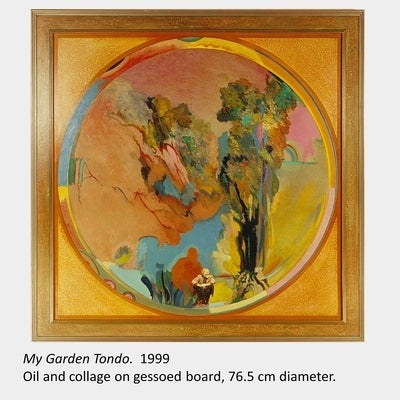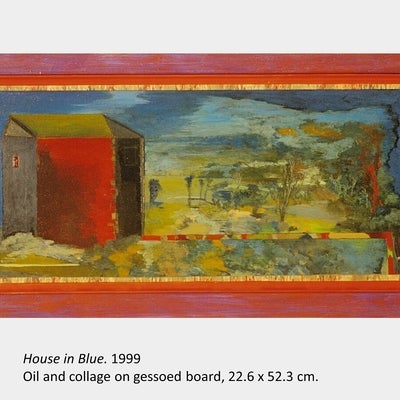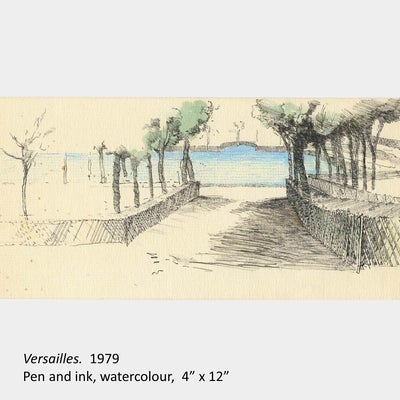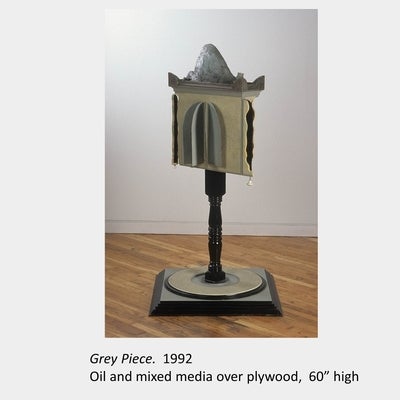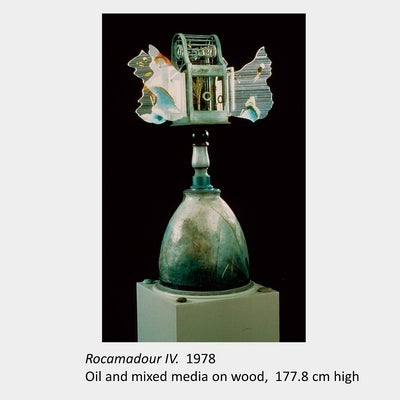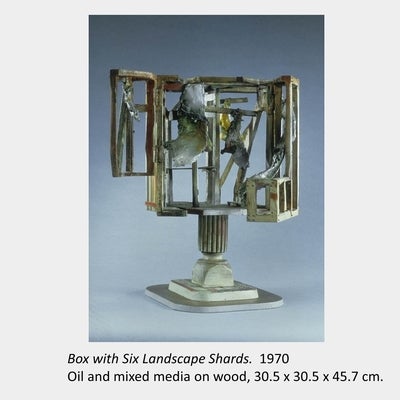
"When I remember Tony, the first thing I recall is seeing his past few days' drawings surging over his kitchen cork-boards. He had a totally engaged and insightful enthusiasm for all the details of making and experiencing art. As a teacher, he never taught from on high, as a lesser person might have done. Tony got just as involved in discussing and analyzing the decisions that went into his students’ work as he would have been with his own. In this way, he modelled for them the real work of an artist in a direct and understandable way - and for me, the real work of a teacher."
- Art Green
Tony was born and raised in Niagara Falls, Ontario where his family ran a funeral home. He received his Bachelor of Fine Arts Degree in 1958 from the Albright Art School, at the State University of New York, Buffalo. While still at University, Tony became known in the Toronto art scene as one of the first Canadian Abstract Expressionists.
By 1960 he was the first artist-in-residence at the University of Western Ontario, London. Tony continued at Western for several years as both a teacher and in the operation of the McIntosh Art Gallery. It was during this time that Tony joined other London artists to found CAR (Canadian Artists Representation), an artist's "union" that established a fee structure for the exhibition of works by artists in museums and galleries. Today, this organization continues as CARFAC. In 1972 Tony accepted a position at the University of Waterloo and became one of the founding members of the Fine Arts Department. He continued at Waterloo, teaching drawing, painting, and printmaking and serving as Department chair on several occasions. He was also instumental in the creation the Fine Arts Graduate program and its cornerstone, the Keith and Win Shantz International Research Scholarship. He retired in 1999 and was appointed Professor Emeritus.
While Tony began his career as a painter, and later became known for his 'box' sculptures, he also filled his life and "idea books" with daily sketches, plans and thoughts. A trip to Europe in his early career captured Tony’s imagination and he was attracted to the “otherness” of those visual experiences, particularly in the landscape, architecture, and cemeteries of France. This experience continued to inspire Tony throughout the rest of his career. Tony was also involved in the Canadian literary scene, particularly with his wife Jane Urquhart, and provided illustrations for various books.
His long and distinguished career in the Canadian art world has resulted in Tony being named to the Order of Canada in 1995. He was the recipient of the 2009 Governor General's Award in Visual and Media Arts, and the CARFAC Outstanding Contribution Award. In 2016, he was given an Honorary Doctorate by Carleton University, Ottawa. His artwork can be found in the collections of the Art Gallery of Ontario, the National Gallery of Canada; the Museum of Modern Art in New York; the Victoria and Albert Museum in London, England; the Hirshhorn Collection of the Smithsonian Institution in Washington, D.C.; the Bibliothèque nationale de France, Paris and the Museo Civico in Lugano, Switzerland.
Tony Urquhart passed away on Wednesday, January 26. He was one of Canada’s great artists. He was also a great teacher and a warm and generous man.
Tony’s art is about other worlds, and is full of thresholds, paths, and light. His drawings, paintings, prints, and sculptures invite us to look inside, to cross the threshold, walk down the path, and feel the warmth of the light. At first glance they are compellingly beautiful, yet they soon become unnerving. Our journey into them becomes more complex as we walk into the deep spaces of the subconscious. That complexity makes great art.
I recall Tony taking great glee in recounting an art historian’s comment made in the early 1970s that he had ‘abandoned painting’ to make sculpture. Tony laughed about it, but it was a serious matter, and he knew that too. ‘Abandoning painting’ was a sign of his courage to work outside the box and challenge the strictures of a mid-20th-century Modernist world. It is also a testament to his creative versatility. Perhaps not surprising, Tony loved boxes and his utterly unique box sculptures blow open the box to pull us in to see, along with him, worlds both inside and out.
Tony was also a great teacher. He taught throughout his career, first at Western in the 1960s before coming to Waterloo in 1972, as one of the founding members of the Fine Arts Department. So many of his students will share their memories of Tony in the classroom, but my perspective is from a young art historian at the start of their career. I gave a ‘teaching talk’ as part of my job interview back in 1996 and we spent some time analyzing a famous painting. Tony was so enthusiastic he almost fell off his chair as he waved his arms around mimicking lines of sight, symmetry, and other parts of the composition. That made me think this might be a good place to work.
More profound evidence that Tony was a true pedagogue: immediately after he retired from UWaterloo in 1999, he returned to a series of paintings he had done in the mid-1960s, several of which portray more than one long path. He was ecstatic as he talked about a painting that had three paths and thus three vanishing points and how he had often set that as a challenge for his painting students. In retirement, he took up the challenge himself and the result is a painting that takes us on a deep journey into memory and the subconscious.
Tony was also an artists’ artist. He enjoyed the ‘safety’ of a university position, but he also fundamentally understood the precarity of life as an artist. In 1968, along with artists Jack Chambers and Kim Ondaatje, he formed the Canadian Artists’ Representation to demand recognition of artists’ copyright. That soon expanded to the national level as CARFAC (the Canadian Artist’s Representation / Le Front des artists canadiens) and Canada became the first country to secure artists’ copyright and artists’ fees. CARFAC continues to be a strong voice, yet, lamentably, is still relatively unique in the global art world.
There will be many wonderful tributes to Tony but perhaps his daughter, Emily, has already written the best: The Age of Creativity, Art, Memory, My Father, and Me (Anansi Press, 2020). His art and his students are his legacy. Yet, for those of us who had the privilege to know him, beyond the students, the paintings, the drawings, the prints, and the boxes, there is also the image of Tony: almost always smiling, and with his glasses hanging around his neck so he can take a closer look.
Joan Coutu, Professor of Art History and Visual Culture, Department of Fine Arts
